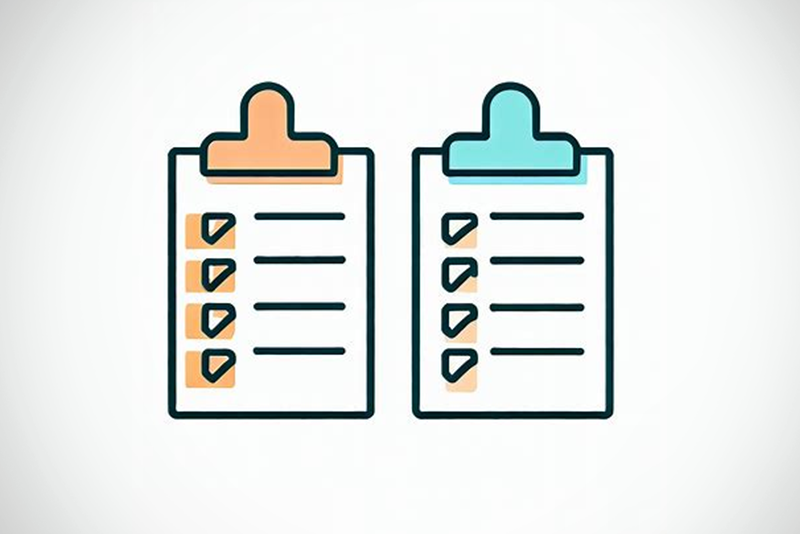Key Account Management (KAM) Maturity Modelling Guide

Key Account Management Maturity Framework Focusing solely on acquiring new business often leads to missed opportunities within existing key accounts. In fact, key account management (KAM) can drive significant growth—improving deal closure rates by up to 25%. Yet, many companies remain trapped in reactive KAM practices, which are often as ineffective as having no program at all. DemandFarm’s KAM Maturity Assessment Model offers a comprehensive framework to help organizations evaluate their KAM maturity, identify strengths, uncover areas for growth, and highlight expansion opportunities. Before strategizing ways to increase revenue from key accounts, it’s essential to understand your current KAM position. This guide will help you: Measure essential KAM metrics Understand the key components of KAM maturity modeling Implement actionable steps to strengthen long-term client relationships
Why should B2B organizations adopt KAM Technology

Why should B2B organizations adopt KAM Technology With recent economic headwinds tightening everyone’s purse strings, driving growth from existing customers is in vogue. As acquisition becomes increasingly expensive, cross-sell and up-sell initiatives are the latest poster child(ren) of B2B revenue growth. Why? – Gartner research has shown that account-based upsell campaigns have increased Lifetime Value by 150%. – Studies show personalized product recommendations can increase revenue by up to 300% and conversion rate by 150% As successive good experiences compound, you move from being their vendor to a strategic partner, increasing the value of your recommendations. More businesses are following suit, taking a closer look at their key accounts to identify strategic accounts with revenue potential. As prospects go from “opportunities” to “accounts,” you realize that the strategies, processes, and activities for key account management significantly differ from those for lead management. Without a dedicated KAM solution, your melange of disparate tools and quick fixes isn’t just wasting your time, it’s eating your growth. And in today’s economic climate, you really can’t afford that.This ebook covers 1. signs that you’re CRM isn’t enough to handle your key accounts 2. when should you consider buying a dedicated KAM tool 3. what the actual impact of a KAM tool looks like on a real company It doesn’t matter where you are in your KAM journey – a beginner or a veteran – if you’re invested in maximizing revenue growth from your existing customer base, this is a must-read.
The ultimate buyer’s guide for key account management tools

Amidst economic fluctuations in 2024, B2B companies are increasingly focusing on strengthening their KAM portfolio. As their organization’s biggest revenue contributors, the increased importance attached to key accounts has increased the adoption of KAM tools. The pandemic-led digital transformation has irrevocably transformed the key account management landscape. Hybrid work environments demanded new frameworks for collaboration, and technological advancements have helped snowball this digital transformation trend into a competitive advantage. The decision to incorporate a KAM tool in your tech stack is a significant one, and choosing the right tool for your organization can be a complex process involving multiple stakeholders and balancing critical parameters. This ebook aims to be a comprehensive toolkit detailing: 1. A quick test to understand your KAM readiness 2. How you can define your KAM goals 3. A framework to recognize the functionalities (in a tool) most critical to your organization 4. Factors you’ll need to consider before making your buying decision 5. A comprehensive checklist template to evaluate KAM tools
Forrester Checklist: Account Planning Readiness Assessment by Forrester

Account Planning Readiness Assessment: Developed by Forrester Assess your organization’s readiness for effective account planning with this downloadable checklist by Forrester. Evaluate crucial elements such as organizational culture, collaboration, data analytics, and customer insights. Receive actionable guidance and industry expertise to enhance your account planning capabilities and drive long-term success. By utilizing the Account Planning Readiness Assessment Checklist, organizations can gain a comprehensive understanding of their strengths and weaknesses in account planning. This self-assessment facilitates informed decision-making and aids in prioritizing initiatives that will drive improved customer engagement, revenue growth, and long-term success.
Future of SAM Study: Shaping the Future of Strategic Account Planning

The Future of Strategic Account Management Unlock the secrets to strategic account management and stay ahead of the curve! Our research team is thrilled to announce the release of our latest report, Shaping the Future of Strategic Account Planning: Insights, Opportunities & Strategies at the Strategic Account Management Association (SAMA) Annual Conference 2023. Find out what sales leaders from over 100 organizations had to say about their objectives, investments, and challenges in strategic account planning. Be the first to learn the trends and best practices in strategic account planning by reading our latest report. Let’s shape the future of strategic account planning together!
Ebook: AI-Assisted Account Planning – Conversations of the Future Part 1

The Future of AI-Assisted Account Planning The future of account planning is here, and it’s time to take advantage of it! Let’s ask Mindy, our helpful AI, and learn more about the role of AI in account planning and find out how AI-assisted account planning can revolutionize the way we do business. This is a 3-part series where we discuss the potential of artificial intelligence, build on connected apps ecosystem, and understand how a shift towards a digital-first mindset is changing how we approach key account management.
Harness the Power of Big Data to Surge in Key Account Planning & Account Growth

The use of big data and artificial intelligence (AI) in account-based marketing has revolutionized the way organizations approach their marketing strategies. Predictive analytics that utilizes historical data to identify future trends and behaviors, can help organizations optimize their communication strategies and make data-driven decisions to drive growth to stay ahead of their competitors. The big data edge Predictive analytics through big data and AI is a game-changer for key account planning. By utilizing predictive analytics, organizations can better understand consumer behaviors and trends and predict future shifts. This empowers them to develop more effective communication strategies, optimize resources and spend, qualify and prioritize leads, and retain customers. With the integration of advanced communication tools and measurement capabilities, organizations can stay competitive and drive growth in today’s data-driven environment. In the past, organizations relied on data-driven communication to understand the long-term impact of their campaigns on sales. However, with the evolution of communication analytics, organizations are now able to move beyond aggregate data and understand user-level interactions. Multi-touch attribution (MTA) models, for instance, enable organizations to gain a better understanding of consumer paths to purchase. The need for predictive analytics and big data With predictive analytics and big data, organizations can understand consumer behaviors and trends better, and predict future shifts with better accuracy. By leveraging machine learning and AI, organizations can combine insights generated through various datasets, algorithms, and models to develop more effective communication strategies. There are three primary models associated with predictive analytics: cluster models, propensity models, and recommendations filtering. These models enable organizations to segment audiences, evaluate consumer likelihood to act, and understand where there might be additional sales opportunities. They can enhance effectiveness by updating their playbook to provide a better overview of consumer behavior, optimize resources and spend, qualify and prioritize leads, and retain customers. With so much data available, organizations require advanced communication tools and measurement capabilities to take full advantage of predictive analytics. Unified communication measurement, communication analytics software, and AI and machine learning are essential features that enable organizations to act on insights in real-time and serve dynamic content automatically. Developing a key accounts-focused culture As every customer or account has a unique persona and behavior, developing an account-centric culture is a top priority for every company. However, tracking progress can be challenging without effective processes. Initially, companies relied on CRM for opportunity management, but account planning tools have since been created to provide intelligence into their key accounts. With the evolving environment, these tools have also had to adapt to new opportunities and help enterprises resolve their existing challenges. Analytics can play a precise role in account centricity by providing detailed insights to prepare proposals/quotes depending on each key account’s requirements. Enterprises can also review target achievements and create reports that facilitate decision-making and strategy formulation. Analytics can identify future trends and opportunities in the industry, as well as insights on the non-captured value of a customer, which may add to the economic value derived from customer profitability analysis. AI for leveling the playing field Businesses of all sizes are recognizing the need to adopt a digital approach to key account management. Small B2B organizations, in particular, face a tough challenge as they do not have the same resources or brand equity as their larger competitors. As a result, they often rely on building strong relationships and trust with their clients through great work and word-of-mouth referrals. However, the COVID-19 pandemic threw a wrench in this approach, as remote work made it challenging to engage with clients physically. To address this challenge, many small B2B organizations have shifted their focus to digital key account management. This approach involves creating and implementing a digital account and relationship strategy to retain and grow key relationships in a remote world. Here are some factors that businesses should consider when making this shift. Data-driven approach to relationship strategy and management should be a top priority. Businesses should collect data and use it to inform decision-making that produces positive outcomes for their organization. This approach is already used by consultants to help clients be successful, and businesses can turn that lens on themselves to see how they can increase their and customer lifetime value. Culture and people change during a digital approach requires proactive and sustained communication across a variety of stakeholder groups. To be successful, businesses must influence broad behavioral change across their company and make it stick by aligning incentives and measurement with the business outcomes that they value. Conducting quarterly business reviews (QBRs) with key accounts can shed light on the importance of the process, and sales teams can prime the rest of the organization for the same. Enabling teams with the right tools is a critical factor in making the shift to digital key account management. Even with a strong approach and workforce, businesses must have the infrastructure and tools in place to make the shift successful. Investing in infrastructure that uplifts the workforce and removes roadblocks and overhead is crucial to supporting this change. Despite the benefits of digital key account management, making the shift can come with its set of challenges. For example, businesses may face resistance to change or struggle to adopt new processes. It’s crucial to identify and address these challenges early on to ensure a smooth transition. Adopting a digital approach to key account management is essential for businesses looking to compete in a remote world. By prioritizing a data-driven approach, culture and people change, and investing in the right tools and infrastructure, businesses can make a successful transition to digital key account management. While challenges may arise, addressing them early on can help ensure a smooth and successful shift. Watch Now: Stories on Successful Digital Key Account Management Transformation Challenges to big data adoption in Key Account Management Big data has the potential to significantly improve key account management by providing insights to make better decisions. However, challenges can arise when collecting and managing large amounts of data. One of the main challenges
Role of Artificial Intelligence (AI) in Large Enterprise Account Planning

Did you know? The global AI market is valued at over USD $136 billion By 2025, as many as 97 million people will work in the AI space 48% of businesses use some form of AI to use big data effectively 83% of companies claim that AI is top priority in their business plans AI industry value is projected to increase over 13x over the next 7 years Netflix makes USD $1 billion annually from automated personalized recommendations In case you were wondering, the future is already here! Gone are the days of manually sifting through massive amounts of data to identify patterns and trends. We now live in a world where large enterprise account planning is no longer a tedious and time-consuming process. It is, instead, a streamlined and highly effective business strategy that provides companies with a significant competitive advantage. This is the difference that Artificial Intelligence (AI) has made. AI has the ability to process large amounts of data with ease, generate valuable insights and provide businesses with the tools they need to make informed decisions that accelerate growth and strengthen customer relationships. With AI, large enterprise account planning is transformed. The benefits are clear – improved efficiency, enhanced accuracy, and a more personalized approach to customer relationship management. From identifying potential sales opportunities to predicting customer behaviour, the power of AI is revolutionizing the way businesses plan for the future. It’s not about technology alone. Successful AI implementation requires careful consideration and planning. Businesses must have a clear and deep understanding of their customers and their unique needs, and the willingness to invest in the tools and resources necessary to make AI work for them. The good news is that real-world examples of successful AI implementation are already available. Companies that have embraced Netflix are seeing significant returns on their investments, including increased revenue, improved customer satisfaction, and reduced costs. The future of large enterprise account planning will only continue to improve with the power of AI. By embracing this technology and all its benefits, businesses can set themselves up for long-term success and growth. Read More: Analysts’ Predictions of AI for Sales, Account Management and Sales Enablement in 2023 Benefits of AI in Large Enterprise Account Planning AI technology offers a range of advanced benefits for large enterprise account planning. With the help of the modern tools and techniques that AI employs, businesses can gain deeper customer insights, optimize their account plans, and make better strategic decisions. Here’s how businesses can benefit from using AI in large enterprise resource planning. 1. Enhanced insights and data analysis AI can help businesses analyze large amounts of customer data with speed and identify patterns and trends. Using traditional data analysis techniques to perform these same tasks would be time-consuming and difficult. For example, machine learning algorithms can identify the most relevant customer attributes and predict which customers are most likely to make a new purchase or renew a contract. Businesses can gain a competitive edge and optimize their account plans more effectively through the use of advanced data analysis tools. 2. Improved efficiency and productivity Through the use of AI, many routine tasks and processes involved in account planning can be automated. This frees up time for sales and account management teams to focus on more strategic activities. For example, natural language processing (NLP) tools can analyze customer interactions and identify potential upsell and cross-sell opportunities. Also, automated lead generation tools can identify new potential customers using predefined criteria. By using these tools, businesses can improve their efficiency and productivity, thus ensuring that they achieve revenue goals more effectively. 3. Streamlined collaboration and communication Project management tools powered by AI are useful in helping teams collaborate more effectively and communicate more efficiently. Team members can have access to a centralized platform to access and share information. Workflows can be streamlined to ensure that everyone is working towards shared business goals. Advances virtual meeting tools can also be used to facilitate real-time communication and enable remote collaboration. This level of connection and accessibility has a positive effect on team productivity. It also reduces the time and costs associated with travel and in-person meetings. 4. Better risk management and decision-making By providing real-time insights into key performance indicators (KPIs) and identifying potential risks, AI can assist businesses in making more informed decisions. For example, network analysis tools can help companies identify potential risks in their supply chain and even predict when a supplier may become unreliable. Predictive analytics can help businesses anticipate market shifts and adjust strategies accordingly, minimizing the risk of lost revenue and possible damage to their reputations. 5. Increased accuracy and reliability Companies are always looking to identify their high-value customers and tailor their account plans accordingly. Working with AI-powered customer segmentation tools, this task is so much easier. These tools help businesses to segment customers based on a variety of attributes, such as demographics, purchase history, and engagement metrics. Advanced data analysis tools can also help businesses track the performance of their account plans. This data can then be used to develop and adjust their plans and strategies. Even as businesses gain a competitive edge and can effectively optimize their account planning through AI tools and techniques, it is important to note that there are challenges and limitations. These include data privacy concerns and the need for expertise in implementing and maintaining AI systems. Businesses that can overcome these challenges and utilize AI to its maximum potential in account planning will see significant benefits and achieve long-term growth and success. AI Tools and Techniques for Large Enterprise Account Planning AI has been able to effectively use the best and most advanced tools and techniques. Employing AI, therefore, gives companies deeper insights which help them drive growth. Some of the most popular AI tools and techniques used in large enterprise planning are: 1. Predictive analysis and Forecasting These are powerful AI tools to help businesses predict future trends and outcomes based on past data. By analyzing
Ideal Digital Account Planning Tool: A Checklist

How to Select the Ideal Digital Account Planning Tool This checklist contains 9 key factors that go into an ideal digital account planning tool. This includes leveraging CRM, real-time reviews, visual representation of white spaces, relationship intelligence, account intelligence and much more.
Measure the Impact of Your Account Planning Solution

Impact of Account Planning Solution This ebook provides ways to assess the efficiency and effectiveness of your Digital Account Planning Solution. From must-have basics to improved data quality & account growth, find out the impact of implementing a Digital Account Planning Solution.